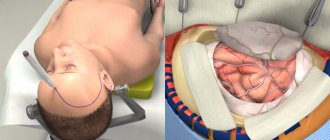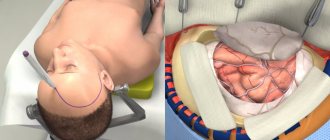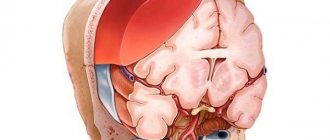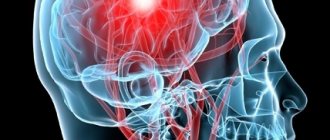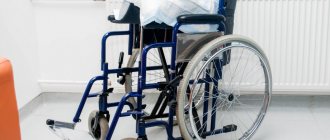Skull fractures are among the most severe injuries. Such damage to the integrity of the cranial bones occurs after severe blows to the head and is often accompanied by brain damage. Therefore, these injuries are life-threatening. And even with a favorable outcome, they have serious consequences for the patient’s health. It is very important that first aid for a traumatic brain injury is provided on time. This will help prevent death. But in any case, the treatment of such injuries is very long and requires complex rehabilitation.
Features of skull fractures
Traumatic brain injuries are very common, especially in young and middle age. They cause about half of the deaths among all injuries. This is due to the fact that a violation of the integrity of the cranial bones often leads to compression or damage to the brain and blood vessels. In addition, the skull has a very complex structure. Many bones are connected by sutures and have different structures and thicknesses. Some bones are penetrated by blood vessels or have air cavities. There are facial and cerebral sections of the skull. It is in the brain that injuries most often occur.
The peculiarity of fractures of the cranial bones is that upon impact, external damage may not be noticeable. After all, the cranial vault consists of internal and external plates, between which there is a spongy substance. The inner plate is very fragile, so upon impact it is most often damaged, even without damaging the integrity of the outer plate.
Causes of such injuries
Skull fractures occur as a result of the application of great force. They most often affect young and middle-aged people who lead an active life or play sports. As well as alcoholics, drug addicts and representatives of criminal structures. There are several reasons why skull fractures occur:
- strong blows to the head with a hard object;
- falling from a height;
- car crashes;
- gunshot wound.
There are two mechanisms for obtaining such an injury: direct and indirect. When a bone breaks where force is applied, it is a direct fracture. This is how cranial vault injuries usually occur. Damaged bones are often pressed inward and damage the meninges. With an indirect fracture, the impact is transferred from other bones. For example, when falling from a height onto the pelvis or legs, a strong blow is transmitted through the spine to the base of the skull, often leading to a fracture.
Prognosis and survival
Fractures of the vault and base of the skull are often fatal. From 20 to 50% of patients survive the injury. In this case, the prognosis will depend not only on the nature of the injury, but also on the state of the body during the recovery period.
An unfavorable prognosis for the patient is associated with massive hemorrhage, damage to vital structures, infection, as well as combined injury to other bone structures and soft tissues. If a person survives, he may face severe long-term consequences, such as epileptic seizures, loss of hearing, vision, and speech. In addition, loss of motor function often occurs, leading to loss of ability to work and disability.
The development of a favorable outcome is possible if the fracture was not accompanied by hemorrhage, swelling, or the formation of wound defects that act as entry points for infectious factors.
To improve the prognosis for life, it is important to seek medical help early and provide first rescue measures.
Symptoms of skull fractures
The patient’s further condition depends on how correctly first aid was provided for a traumatic brain injury. With any strong blow to the head area, you should suspect the possibility of a fracture of the skull bones. After all, sometimes such an injury is not accompanied by clearly visible symptoms. But there are also special signs that can be used to determine not only the presence of a fracture, but sometimes its location and damage to the meninges.
- The main symptom of a skull fracture is impaired consciousness. This may include fainting or coma, memory loss, confusion, or hallucinations.
- In addition, skull fractures are always accompanied by severe headaches, dizziness, and nausea.
- When the brain and nerve fibers are damaged, sensory disturbances, paresis and paralysis are observed.
- If the fracture affects the brain stem, breathing may be difficult and blood circulation may be impaired.
- With a fracture of the base of the skull, hematomas around the eyes or in the mastoid area are often a characteristic symptom. There may be bleeding with cerebrospinal fluid from the nose and ears.
- A fracture of the temporal bone is considered a very serious injury. It causes severe dizziness, loss of coordination, nausea, hearing loss, and facial paralysis.
Pathogenesis
Fractures are accompanied by hemorrhages into the surrounding tissues and brain contusion. Ruptures of the dura mater or mucous membrane of the paranasal sinuses are often found, resulting in contact of intracranial structures with the external environment. A rupture of the membrane can be localized in the area of the paranasal sinuses, orbit, oral and nasal cavities, or the middle ear cavity, causing the leakage of cerebrospinal fluid from the ear or nose, along the wall of the nasopharynx. In the rupture zone, penetration of pathogenic microbes is possible, causing infectious damage to brain structures. With injuries to the cells of the ethmoid bone, pneumocephalus is observed. In addition, when the integrity of the hard structures of the skull base is damaged, damage to the diencephalic parts of the brain, VII and VIII, and less often to other cranial nerves, is often detected.
Classification of skull fractures
Injuries to the cranial bones can be different. They are classified according to the nature of the fracture, location, and severity of the lesion. Various parts of the skull may be affected. Based on the nature of the injury, there are three types:
- the most severe is a comminuted fracture, which can result in damage to the meninges and blood vessels;
- a depressed fracture also has serious consequences, because with it the bones of the skull are pressed inward, which causes crushing of the brain;
- linear fractures are considered harmless, since there is no displacement of bone fragments, but they can cause damage to blood vessels and the appearance of hematomas;
- very rarely, a perforated fracture occurs as a result of a gunshot wound; as a rule, such an injury is incompatible with life.
Based on the location of the injury, a fracture of the temporal bone, occipital or frontal is distinguished. They refer to cranial vault injuries. If the base of the skull is damaged, this causes cracks in the facial bones, which spread to the eye sockets, bridge of the nose and even the ear canal. In addition, a fracture of the skull bones can be open or closed, single or multiple. The patient’s condition depends on the severity of the injury, the degree of damage to the meninges and blood vessels, as well as on the timely medical care provided.
Rehabilitation period
Rehabilitation after injury is required for absolutely all patients. However, the length of this period will depend on the severity of the injury. For a mild, uncomplicated fracture, rehabilitation consists of:
- Compliance with all recommendations of the attending physician;
- Use of prescribed medications;
- Compliance with the prescribed daily routine;
- Observation by specialized specialists: neurologist, ophthalmologist, traumatologist and otolaryngologist.
After a serious injury, rehabilitation is a multi-stage treatment.
The rehabilitation period after a complicated fracture includes:
- Limiting physical activity. That is, excessive loads are excluded;
- Nutrition correction. Meals should be light, small and balanced. Patients with impaired swallowing function require tube feeding with nutritional mixtures;
- Physical therapy and massage course;
- Restoration of cognitive functions of the brain. The patient is given classes to develop attention, speech and memory;
- Restoration of coordination and motor functions in the limbs;
- Psychotherapeutic support for patients with mental disorders. In severe cases, treatment in a psychiatric clinic is required;
- Carrying out medical procedures;
- Taking medications of various groups : vitamins, nootropics (improves nutrition and restoration of brain tissue), analgesics;
- Caring for bedridden patients, which includes feeding, hygiene procedures, and anti-decubitus manipulations.
Calvarial fracture
Occurs from a blow to the scalp. Therefore, the main symptom of such an injury is a wound or hematoma in this place. But the difficulty of diagnosing this injury is that the impact often damages the inner plate of the cranial bone, which is almost invisible from the outside. The patient may even regain consciousness, but gradually the symptoms of brain damage will increase. A fracture of the skull vault can occur for various reasons, most often due to an impact. People under the influence of alcohol and drugs are especially susceptible to such injuries. Indirect impact, for example from a fall on the pelvis, may be accompanied by a fracture of the base of the skull. In this case, the patient's condition is especially serious, and the injury can be fatal.
Forecast
The prognosis after a fracture of the base of the skull is not always favorable. It largely depends on the time elapsed from the moment of injury to the start of treatment. The therapy itself is also of great importance - from first aid to the recovery period. The incidence of death with this type of injury is quite high. Survivors almost always experience some consequences of a basal skull fracture.
The most common include chronic headaches, impaired vision and hearing, and sinusitis. If there was damage to the brain substance, a variety of neurological disorders remain.
A fracture of the base of the skull is a serious injury that carries with it serious consequences. Therefore, it is very important to know what happens to a person with this injury and how to provide him with first aid.
Fracture of the base of the skull
Survival from such injuries depends on timely medical care. A fracture in this location can be independent or accompany a trauma to the cranial vault. In addition, a fracture of the anterior, middle and posterior cranial fossa is distinguished. Such injuries, depending on the location and severity, are accompanied by bleeding from the nose and ears, and leakage of cerebrospinal fluid. A characteristic symptom of a fracture of the anterior cranial fossa is bruising around the eyes. With such injuries, all the patient’s senses are affected: vision, hearing, smell, and coordination of movements are impaired. A fracture of the base of the skull is considered a very serious injury. The survival rate for it is approximately 50%.
Therapeutic measures
Very often, fractures of the bones of the base of the skull require surgical intervention. However, it is possible to treat such damage conservatively, which means a favorable outcome and the absence of severe brain damage. The decision is made individually and depends on the results of the study. Let's try to understand the features of one and the other direction in the treatment of fractures of the base of the skull.
If a person loses consciousness, it is indicated to be hospitalized in the intensive care unit. Additionally, intubation and inhalation with humidified oxygen are indicated. The doctor prescribes medications designed to maintain brain function and prevent the destruction of its structures. There must be constant monitoring of blood pressure, heart rate, and fluid injected and excreted.
Diagnosis of injuries
For any traumatic brain injury, an examination is performed to rule out a fracture. In addition to questioning the victim or his accompanying persons about the circumstances of the injury, the doctor examines the patient. Sensitivity, the presence of reflexes are assessed, the pulse and the reaction of the pupils to light are checked. An X-ray of the skull is also taken in two projections. To confirm the diagnosis, the results of magnetic resonance and computed tomography, brain puncture and echoencephalography are used. Such a study must be carried out even in the absence of visible consequences of injury, since after an impact only the inner plate of the skull bones can be damaged.
Treatment in hospital
After transport to the medical center, the patient receives the following treatment:
- Drugs such as Ammonia or Cordiamin solution, as well as glucose solution, will help support cardiac function.
- The diuretics Spironolactone, Veroshpiron, Triamterene, Amiloride, Demeclocycline are used.
- In case of heavy blood loss, a solution of Albumin or Reopoliglucin is administered.
- If breathing functions are lost, oxygen inhalation through a mask is used.
- In case of motor agitation, a sedative is administered.
Features of skull fractures in children
Despite the belief of many that a child’s cranial bones are stronger, such injuries often occur in children. Moreover, their diagnosis is difficult, and the consequences are usually more serious. A skull fracture in a child is dangerous because the victim may feel well immediately after the injury. This is due to insufficient development of the frontal lobes and other parts of the brain. The consequences appear later: a strong increase in blood pressure, loss of consciousness, vomiting, anxiety, tearfulness. Features of skull injuries in children are multiple linear cracks, suture dehiscence and bone depression. Less common than in adults are comminuted fractures, hematomas and hemorrhages. But complications can be just as serious: epilepsy, hydrocephalus, developmental delays, visual and hearing impairments often develop.
First aid
When a traumatic brain injury occurs, it is very important how quickly the victim receives medical assistance. Often his life depends on it. Until the victim is taken to the hospital, he must be laid on a hard surface without a pillow, his head supported with soft objects. If he is conscious, he can lie on his back. If the victim faints, turn him on his side, supporting his head with pillows so that he does not choke when vomiting. It is advisable to remove all jewelry, glasses, dentures, and unbutton clothes. The victim must be provided with free access to air.
If a head injury bleeds, cover it with a sterile bandage and apply ice, but do not touch or put pressure on the injury site. It is not recommended to give the patient any medications before the doctor arrives, since, for example, narcotic analgesics can cause breathing problems. The victim should be taken to a doctor as soon as possible, even if he is conscious and feels normal. After all, skull injuries never go away without leaving a trace. And without timely treatment, they can cause serious consequences.
Features of treatment of skull fractures
A victim with a traumatic brain injury must be hospitalized. Depending on the severity and location of the injury, conservative or surgical treatment may be prescribed. Bed rest is mandatory. The head should be slightly elevated to reduce the leakage of cerebrospinal fluid. In case of trauma to the base of the skull, a lumbar puncture or drainage is necessary. For fractures of moderate and mild severity, drug therapy is carried out. The patient is prescribed the following medications:
- painkillers, non-steroidal anti-inflammatory drugs;
- diuretics;
- antibiotics to exclude purulent infection;
- nootropic and vasotropic agents;
- drugs to improve cerebral circulation.
If the fracture is severe, for example comminuted or depressed, with multiple bone damage, then surgical treatment is performed. It is needed to remove fragments and areas of necrotic tissue, as well as accumulated blood. During the operation, damage to nerves and blood vessels is also eliminated. Surgical treatment is used if purulent infection has begun, which is not eliminated with conservative therapy.
Conservative therapy for injury
Conservative treatment is carried out for uncomplicated linear fractures when the intervention of a neurosurgeon is not required:
- Conservative tactics involve strict adherence to bed rest. In this case, the patient’s head should be slightly elevated so as not to create conditions for cerebral edema and stagnation of cerebrospinal fluid;
- To reduce cerebral edema, dehydration therapy is carried out , which includes the mandatory use of diuretics. For this purpose, Diacarb, Mannitol, etc. can be used;
- To prevent purulent complications, broad-spectrum antibacterial drugs are used, which can be used in the form of intravenous, intramuscular infections, as well as endolumbarally, that is, by injection into the spinal canal. The following drugs are used: Monomycin, Levomycetin, Polymyxin, Kanamycin, etc.;
- In some cases, cerebrospinal fluid is cultured on a nutrient medium to determine the sensitivity of microorganisms to antibiotics. In the prevention of infectious complications, much attention is paid to the sanitation of the oral cavity, nose and ear.
The consequences of such injuries
If the skull fracture is linear, without displacement of bones or large hematomas, and also if purulent infection has been avoided, then the prognosis for recovery is usually favorable. But a skull fracture does not always go away without complications. The consequences of such an injury can be very serious:
- meningitis, encephalitis;
- intracerebral hematomas can lead to encephalopathy;
- excessive bleeding most often ends in death;
- after a comminuted fracture of the base of the skull, paralysis of the entire body may develop;
- Patients often suffer from psychological and emotional disorders and decreased mental abilities.
